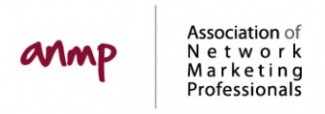Jon Taylor
By Len Clements © 2005
| I’m sure those of you who have been following this column over the last several months have a pretty clear picture of what I’m defining as an “Anti-MLM Zealot.” For the benefit of those readers new to this series, allow me to reiterate – an Anti-MLM Zealot isn’t someone who dislikes MLM. Even those who really, really dislike it are not necessarily worthy of the title. There are a lot of people who are “anti-MLM,” likely due to one failed experience, or more likely due to them borrowing the negative opinion of someone else and making it their own, without doing any of their own actual research. No, the Anti-MLM Zealot is someone who is borderline obsessive about exposing their negative opinions to others – even those who never asked for it. They are someone who spends hundreds, if not thousands of hours of their lives searching for evidence to rationalize their extremist viewpoint. Then they compile and present their observations, theories and opinions to anyone who will pay attention to them in an effort to rid the nation of all things MLM. The fact that there are thousands of good, honest people supporting their families from their MLM incomes, who’s livelihoods would be ruined if their MLM prohibition agenda were successful, is rationalized away by simply denying they exist. Or, creating a dichotomy where all those who do succeed are the “perpetrators.” The rest are “victims.” There are really only four bona fide Anti-MLM Zealots out there trying to wreck your business, and for many of you, your livelihood. Arguably the most read is Dean Van Druff, the most prominent is Robert FitzPatrick, and the most currently active is Ruth Carter. All have been discussed in previous editions of this series. But by far the one who has churned out the greatest abundance of anti-MLM propaganda is Mr. Jon Taylor, co-founder of the Consumer Awareness Institute, who’s work we barely scratched the surface on in last month’s edition. Let’s dig deeper. Tall Taxing Tails In an effort to bolster his case that very few network marketers make any money, Taylor relates the testimony of 33 tax preparers and CPAs he interviewed, not one of which could remember an MLM distributor client who made a “substantial” profit. The only challenge in rebutting this hogwash is deciding where to begin! Let’s start with the fact that a document in which someone attempts to report the least amount of income legally possible isn’t exactly the best tool to judge how potentially lucrative a profession may be (not to mention all those returns these preparers saw where the client was overly aggressive in reporting business expenses, which I’m sure were more than a few). Putting that obvious point aside, consider this: According to Taylor, these 33 tax preparers had an aggregate total of about 14,400 clients in 2002 (the year Taylor did this “study”) and had worked on over 300,000 tax returns in their careers. Yet, amazingly, not only did they remember the “several hundred” that were MLM distributors, but even recalled the amount of their profits and losses! One particular preparer from H&R Block claimed to have prepared over 10,000 returns over 32 years, and not only recalled that all of his MLM clients lost money, he could even cite the average amount they lost! Pretty incredible, isn’t it? And what, exactly, is a “substantial” profit? And how would they know who was a network marketer? I’ve filed over a dozen 1040s since going full time in this business, and don’t recall once being asked to define my occupation. What’s even more difficult to accept is Taylor’s claim that he then called other tax preparers, accountants, financial planners, bankers, and insurance underwriters, (insurance underwriters?) who all allegedly “relayed similar feedback.” What does this mean? Who? Where? When? With such damning evidence you’d think Taylor would have spent some time on this point, and provided specifics. Yet he simply glosses over it in all of three sentences. And get this: Taylor decided to call 33 more tax preparers in Utah county and found that they could recall 38 clients who had made “large profits from a variety of MLMs” in the last year alone, and about 185 throughout there careers. Some, Taylor reports, “were reaping checks ranging from tens of thousands of dollars a month to close to $1 million a month!” How does he explain this? Well, Utah county, you see, has a high concentration of MLM corporate offices, and those most likely to be at the top of the pyramid would reside near their company’s home office. I’m not kidding. That’s his explanation. Of course, he provides no information as to the level these mega-earners are on, nor does he really have even the slightest clue. He also does not take into consideration that those top earners who do live near the home office (of the very few who actually do) often times moved there after they became successful. The reality is, his first survey was of tax preparers in what he acknowledges are “sparsely populated” areas of Utah, and the second survey was in a densely populated area, and common sense would suggest (and my own MarketWave research has proven) that areas of higher population density are more conducive to successful network marketing. Within the fine print footnotes Taylor mentions that he also called 106 tax preparers from other parts of Utah as well as Michigan, Idaho and California. Curiously, his findings from these surveys are not presented. If it supported his case, you can bet he would have presented them. Odd Odds In yet another example of Taylor’s gross lack of objectivity, he states, “It is interesting to compare the odds of success of MLM schemes with legalized gambling in Nevada. It appears that on average one could do better at most any of the gaming tables or slot machines…”. Once again we have an anti-MLM zealot (previously it was Robert FitzPatrick) suggesting our successes are somehow a game of chance. It’s interesting to note how one’s “odds” of success in MLM seem to increase the longer they commit to it, the more they study it, and the harder they work at it. Taylor provides charts, graphs and numerous footnotes to create the illusion of substance to his findings. But when held up the light it reveals itself to be nothing more than gussied up garbage math. In one case he provides a chart showing the odds of turning a profit in a “no product” pyramid scheme, a single bet on a roulette wheel, and an MLM opportunity. He claims the percent who lose money in a classic pyramid scheme is 90.4% (9.6% make a profit), but 99.95% lose money in MLM. If we follow the asterisks to the fine print, we discover that his 9.6% figure came from a news report of a scheme called “The Original Dinner Party” and Robert FitzPatrick’s experience with the “Airplane Game” over 20 years ago. That’s it. Another asterisk leads us to where Taylor arrived at his so often cited “99.9% fail” figure. He picked six MLM companies (out of thousands) and analyzed “internal reports” along with SEC and FTC filings, even though only one is a public company in the United States. He also factored in “reports from ex-distributors.” But apparently his findings were still not to his liking, so he had to “correct” what he refers to as “deceptive data.” First, he didn’t care for the way MLM companies only report the earnings of those who are “active.” Adding back in all those who made no money because they didn’t do anything to earn it (signed up, bought a kit, and quit) would certainly increase his “failure” percentage. Next, he had to factor in each distributor’s average annual expenses. How he arrived at this number is not stated, nor does he even reveal the number he chose to use – because there’s only one way he could have arrived at it. He made it up. For someone who demands such statistical facts and verification from us, it’s both ironic and hypocritical of Taylor to pull flimsy, baseless, claims such as this out of thin air. His “99.9% fail” mantra is based on nothing more than a grossly bias guess. Selective Memory In his research, Jon Taylor interviewed me and read my book “Inside Network Marketing.” The only evidence of this anywhere in his material is his recounting of a question I have on my MLM survey (www.marketwaveinc.com) related to income goals. Yet, in spite of my crystal clear description of the question itself, and a verbal discussion on the phone where I reiterated my findings, his portrayal (betrayal) of this survey is so self serving and skewed as to suggest deliberate deception. My survey question simply asked at what income level one would consider themselves “successful?” Not their dream goal (of course we all want to be millionaires), but their “primary” income goal, and anything above that is icing on the cake. Eighty-six percent said they would consider themselves successful if they only made enough to quit their job and make a “comfortable living,” which they quantified, on average, as being $5,988 per month. According to Taylor, I asked what their “expectations of success” were and that 86% said they “expected a full-time income to result from their (MLM) participation.” My survey also found that 6% said they would not feel “successful” unless they made at least $84,000 per month (one million per year). This means, as I state in the survey, my book, and in every other situation when I’ve ever recited these findings, that clearly 6% misunderstood the question on the survey (obviously, they would likely consider themselves successful if they made only $10,000 per month, or surely $50,000). But Taylor calls it “remarkable” that 6% expected to make $86,000 per month, then asks “What do such expectations tell us about the more aggressive MLM promoters?” A better question is, what does Taylor’s portrayal of my findings tell us about the more aggressive MLM demoters? The last two installments of this series will deal with general anti-MLM concepts and accusations, such as market saturation, exploiting relationships, and high distributor failure rates, among others. I’m done with rebutting specific anti-MLM zealots – unless there’s another one you think deserves the scrutiny. If so, please let me know. |










